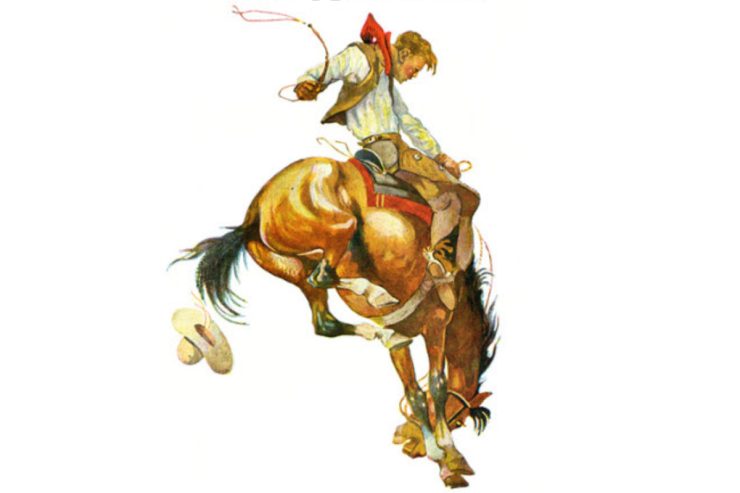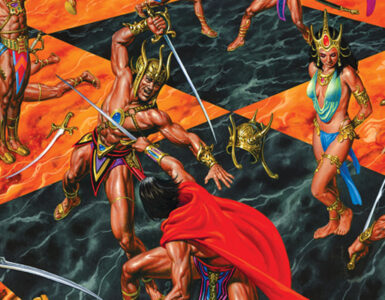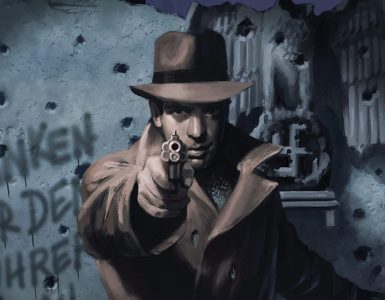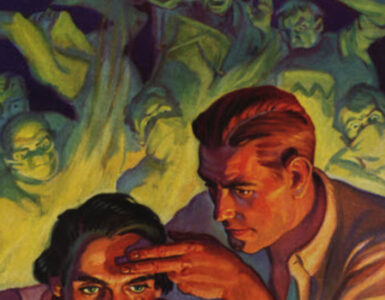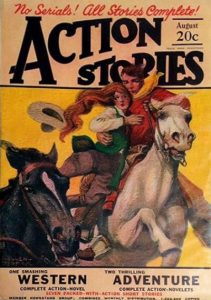 Born December 5, 1897 in Bavaria, Nick Eggenhofer emigrated to the United States in 1913. From the fall of 1916 until the winter of 1919 – 1920, Eggenhofer studied art at Cooper Union in New York City. He went to school at night, while working a variety of jobs, including a stint at the American Lithographic Company.
Born December 5, 1897 in Bavaria, Nick Eggenhofer emigrated to the United States in 1913. From the fall of 1916 until the winter of 1919 – 1920, Eggenhofer studied art at Cooper Union in New York City. He went to school at night, while working a variety of jobs, including a stint at the American Lithographic Company.
In 1920, at the suggestion of one of his instructors, Eggenhofer visited the offices of Street & Smith with a few samples of his work. According to the artist’s autobiography, Horses, Horses, Always Horses:
I had three simple watercolors, which of course were of western subjects. . . . an assistant to the art director came out to see me and took my drawings. He returned in a short time and told me the art director was interested in my pictures and asked if I would accept twenty-five dollars apiece for them.
So began the professional career of Nick Eggenhofer. Those “three simple watercolors” would serve as the cover art for three 1920 issues of Western Story Magazine, the Street & Smith rough-paper periodical descended from the publishers’ New Buffalo Bill Weekly. Ironically, German translations of the Street & Smith dime novel had fostered Eggenhofer’s love for the American West and “. . . its Indians, its cowboys, its big men.”
During a strike against American Lithography, the budding artist once again visited Street & Smith. This time, he met with William “Pop” Hines, the company’s art director who was impressed by Eggenhofer’s drive and spirit. Hines asked for “eight simple drawings to be used as story headings,” offering the artist four dollars for each illustration. Able to work quickly and proficiently, Eggenhofer was soon enlisted as a regular contributor of interior art and occasional cover paintings for the now-weekly Western Story Magazine.
As Eggenhofer gained confidence as an artist, he began to expand his markets, selling cover paintings to Doubleday’s Short Stories in 1922, and Clayton Publications’ Ace-High Magazine and Fiction House’s Novelets in 1923. When Clayton debuted Cowboy Stories in 1925, Nick Eggenhofer supplied its first cover.
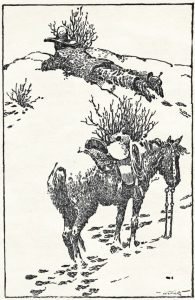 Although the artist would continue to contribute cover paintings into the middle thirties, Eggenhofer would gain his greatest recognition as a pulp artist for his interior story illustrations. His black-and-white work was regularly featured in Ace-High Magazine, Action Stories, Adventure, Boy’s Life, Cowboy Stories, Dime Western, Fifteen Western Tales, Frontier Stories, Lariat Story Magazine, North•West Stories, West, Wild West Weekly, and, most notably, Western Story Magazine. According to his biography at Heritage Auctions, “an avid student of western history . . . he strove to imbue even the sketchiest of drawings with authenticity. . . . Eggenhofer’s trademark was absolute historical accuracy.”
Although the artist would continue to contribute cover paintings into the middle thirties, Eggenhofer would gain his greatest recognition as a pulp artist for his interior story illustrations. His black-and-white work was regularly featured in Ace-High Magazine, Action Stories, Adventure, Boy’s Life, Cowboy Stories, Dime Western, Fifteen Western Tales, Frontier Stories, Lariat Story Magazine, North•West Stories, West, Wild West Weekly, and, most notably, Western Story Magazine. According to his biography at Heritage Auctions, “an avid student of western history . . . he strove to imbue even the sketchiest of drawings with authenticity. . . . Eggenhofer’s trademark was absolute historical accuracy.”
This week, on the 125th anniversary of his birth, we salute the life and work of Nicholas Eggenhofer, winner of the National Cowboy Hall of Fame Trustees Award for Outstanding Contribution to Western Art.
Although Street & Smith was Nicholas Eggenhofer’s main market for the estimated 30,000 illustrations that the artist produced during his career as a pulp artist, he also contributed a significant amount of work to other publishers, including Fiction House. Pictured above is Eggenhofer’s cover for Action Stories, dated August 1925, as well as an interior illustration by the artist for “Daredevil Trail,” a novella written by Forbes Parkhill. It appeared in Clayton Publications’ Ace-High Magazine, First November number for 1932. Parkhill was a prolific writer who wrote largely for the western pulps. He also contributed to Collier’s and The Saturday Evening Post, as well as Weird Tales and the detective pulps.
Our featured image is Eggenhofer’s cover painting for the April 2, 2021 issue of Western Story Magazine.
David Saunders, the foremost scholar of American pulp artists, paid tribute to Nick Eggenhofer at PulpFest 50.

